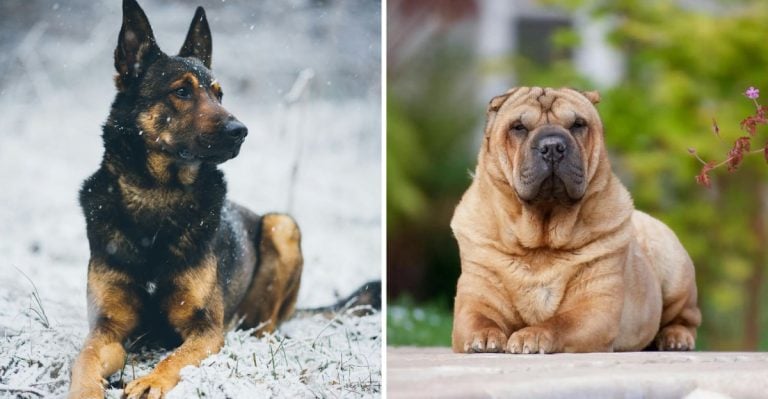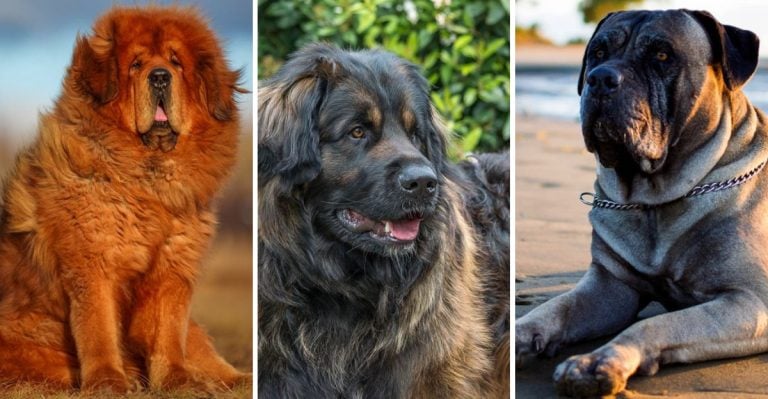21 Dog Breeds That Instantly Sense Your Mood—Without You Saying a Word
Dogs have long been called man’s best friend—but for some breeds, that friendship goes far deeper than playtime and belly rubs. These remarkable dogs possess an almost uncanny ability to tune into our emotional state, often responding with comfort, loyalty, and quiet companionship just when we need it most. Whether you’re stressed, sad, or simply feeling off, certain dog breeds seem to know exactly what you’re going through—without a single word from you.
That’s because dogs don’t rely on language the way we do. They read body language, facial expressions, tone of voice, and even subtle changes in our scent to pick up on mood shifts. And while nearly all dogs are emotionally perceptive to some degree, some breeds are practically wired for empathy. These canines don’t just observe human emotions—they respond. They’ll nuzzle your hand when you’re down, quietly rest their head on your knee, or get playful when they sense you need cheering up.
Whether it’s the ever-loyal Labrador or the ever-watchful German Shepherd, some dogs don’t just live with you—they feel with you. In this list, we’re highlighting 21 dog breeds known for their strong emotional intelligence and uncanny ability to sense and reflect human feelings. From gentle giants to pint-sized lapdogs, these pups have a sixth sense for what’s going on in your heart.
If you’ve ever felt comforted by your dog without even asking for it, you’ll want to see which breeds made the list. You might even discover the perfect emotional support companion you never knew you needed. Let’s take a closer look at the dogs who not only love us—but truly understand us.
1. Labrador Retriever
America’s favorite breed for good reason! Labradors possess an uncanny ability to detect the slightest shift in your emotional state. Their expressive eyes lock onto yours, reading micro-expressions that even humans might miss.
Labs are particularly adept at recognizing anxiety and depression, often responding by gently placing their head on your lap or bringing a favorite toy as distraction. This emotional intelligence makes them exceptional therapy and service dogs.
Their natural empathy isn’t just coincidence – it’s wired into their genetics after generations of working closely with humans as hunting companions and later as assistance dogs.
2. Golden Retriever
Golden Retrievers don’t just sense emotions – they actively work to improve them. When you’re down, a Golden will suddenly appear with a toy or nudge your hand for pets, instinctively knowing physical contact helps release oxytocin.
Their smiling faces and wagging tails aren’t random; they’re calculated responses to your emotional state. Studies show Goldens can detect subtle changes in human body chemistry that signal stress or sadness.
Many owners report their Goldens becoming extra attentive hours before they themselves realize they’re coming down with illness or experiencing emotional distress – making these dogs natural mood forecasters.
3. Border Collie
Sharp as a tack and twice as perceptive, Border Collies don’t miss a thing. These canine Einsteins can detect microscopic changes in your facial expressions, posture, and even breathing patterns that signal emotional shifts.
A Border Collie owner once told me her dog would bring different toys depending on her mood – tennis balls when she was energetic, soft plushies when sad. This isn’t coincidence but calculated emotional intelligence.
Their herding background makes them naturally attuned to subtle behavioral changes. While they might try to “herd” you toward happiness with gentle nudges or playful barks, they’re really saying, “I see you’re hurting, and I’m here.”
4. Poodle
Don’t let those fancy haircuts fool you – Poodles are emotional geniuses in disguise. Their intelligence goes beyond tricks and commands to a deeper understanding of human psychology. Poodles observe patterns in your behavior, creating a mental map of what makes you happy, sad, or anxious.
Many Poodle owners report their dogs behaving differently depending on their mood – becoming playful when they’re happy or quietly resting nearby when they’re sad. This isn’t training; it’s intuition.
Originally bred as water retrievers, Poodles developed strong bonds with hunters, learning to read subtle hand signals and emotional cues. This working heritage gives them an edge in emotional intelligence that few breeds can match.
5. Cavalier King Charles Spaniel
These velvet-eared charmers were literally bred to sense emotions. Historically kept as companion dogs for royalty, Cavaliers that couldn’t tune into their owners’ feelings didn’t make the cut in selective breeding.
A Cavalier’s favorite place is wherever they can watch your face. They study your expressions with an intensity that borders on obsession, learning your emotional patterns better than most humans could.
When you’re feeling blue, expect your Cavalier to become your shadow, offering silent comfort through physical closeness. Their emotional radar is so finely tuned that many owners report their Cavaliers sensing anxiety attacks before they fully develop.
6. Newfoundland
Newfoundlands carry empathy in their massive frames. These gentle giants seem to absorb negative emotions like emotional sponges, often positioning their substantial bodies between their owners and perceived sources of stress.
Their calm demeanor isn’t just personality – it’s purposeful. Newfies instinctively lower their energy when they sense anxiety or sadness, providing a steady, grounding presence when emotions run high.
Historically used as water rescue dogs, Newfoundlands developed an uncanny ability to sense distress. This instinct translates perfectly to emotional rescue, making them natural therapy dogs for those suffering from PTSD or anxiety disorders.
7. Beagle
Beagles might seem like they’re all about following their noses, but these expressive hounds are actually tracking your emotions too. Their hunting heritage makes them extraordinarily sensitive to changes in voice pitch and tone – they can detect the slightest quiver of sadness or stress in your speech.
Watch a Beagle’s ears closely – they position differently based on your emotional state. Relaxed when you’re calm, alert when you’re anxious, and slightly back when you’re sad.
Beagles are emotional mirrors, often adopting your mood as their own. This mirroring behavior isn’t just sympathy; it’s their way of communicating “I understand exactly how you feel” in the most authentic dog language possible.
8. Australian Shepherd
Australian Shepherds don’t just herd sheep – they corral emotions too. These vibrant, multi-colored dogs can detect the subtlest shifts in your emotional atmosphere, responding with uncanny precision to your needs.
An Aussie owner once described her dog as “reading the room better than most humans.” These dogs scan family members’ faces constantly, creating a mental emotional map of everyone in their pack. When tensions rise, they often insert themselves into the situation with a toy or playful behavior – natural emotional mediators.
Their herding instincts translate to emotional shepherding, as they attempt to guide you back to calmer emotional states through gentle interventions and unwavering attention.
9. Collie
Long before Lassie graced television screens, Collies were quietly serving as emotional guardians for their families. These dogs possess an almost supernatural ability to anticipate emotional needs, often responding to feelings you haven’t even acknowledged yet.
Collies maintain a mental inventory of each family member’s typical emotional state, immediately noticing when someone deviates from their norm. Their famous “Collie stare” isn’t just for show – they’re actively processing micro-expressions and body language.
Rural Scottish shepherds relied on Collies’ emotional intelligence to alert them to distressed sheep before visible signs appeared. This same instinct now helps them detect human emotional distress, making them excellent therapy and support animals.
10. Bulldog
Behind that wrinkled face and tough appearance lies one of dogdom’s most emotionally sensitive souls. Bulldogs may look stoic, but they’re actually emotional sponges, absorbing and responding to your feelings with remarkable accuracy.
Unlike more obviously reactive breeds, Bulldogs show their emotional intelligence through subtle proximity adjustments – moving closer when you’re sad, giving space when you’re angry, and placing their solid bodies against yours when anxiety strikes. Their calm demeanor serves as emotional ballast during turbulent times.
English Bulldogs were originally bred to be steadfast and brave, qualities that now manifest as emotional resilience. They remain unshaken during emotional storms, providing stable comfort when you need it most.
11. Yorkshire Terrier
Don’t let their diminutive size fool you – Yorkies pack emotional intelligence into their tiny frames. These former ratters developed keen observation skills that now apply to human emotional states, making them surprisingly perceptive companions.
Yorkies are especially attuned to sadness, often responding by climbing onto laps or chests, positioning themselves where they can make direct eye contact. This isn’t just cuddling; it’s purposeful emotional intervention.
Their alertness to emotional changes makes them excellent early warning systems. Many Yorkie owners report their dogs becoming clingy or protective hours before they themselves realize they’re becoming ill or emotionally vulnerable – proving these tiny dogs have emotional radar that works overtime.
12. German Shepherd
German Shepherds operate like sophisticated emotional security systems, constantly scanning for threats not just to your physical safety but to your emotional wellbeing too. Their protective instincts extend beyond physical dangers to emotional ones.
These dogs maintain constant awareness of your baseline emotional state, immediately noticing deviations. A German Shepherd will often respond to your sadness before you’ve even shed a tear, pressing against you or placing a paw on your knee.
Police and military handlers rely on their Shepherds’ ability to sense emotional changes in high-stress situations. This same talent makes them exceptional at detecting anxiety, depression, and even the subtle emotional shifts that precede panic attacks in their civilian families.
13. Boxer
Boxers seem to have one emotional mission in life: turning your frown upside down. These naturally playful dogs have an uncanny ability to sense when sadness or depression is settling in, often responding with perfectly timed silly antics.
What looks like random goofiness is actually targeted emotional intervention. Boxers strategically escalate their playfulness in direct proportion to your negative feelings, creating a natural form of laughter therapy.
Beyond their clown personas, Boxers show remarkable restraint and gentleness when they sense genuine distress. They’ll transform from bouncy playmates to calm, steady companions in seconds, pressing their bodies against yours and offering silent support until the emotional storm passes.
14. Doberman Pinscher
Dobermans guard more than your home – they protect your emotional state too. These sleek, powerful dogs maintain constant emotional surveillance, processing subtle changes in your body chemistry, posture, and facial expressions.
A Doberman’s response to your emotions is purposeful and measured. When they sense sadness, they often position themselves where they can maintain eye contact while pressing against you, creating physical and emotional security simultaneously.
Their reputation for loyalty has deep emotional roots. Dobermans form such intense emotional bonds that they physically mirror their owners’ stress responses – studies show their cortisol levels rise and fall in tandem with their humans’, creating a unique form of emotional synchronicity few other breeds achieve.
15. Rottweile
Beneath that powerful exterior beats the heart of an emotional genius. Rottweilers read human emotional states with remarkable precision, responding with a quiet steadiness that grounds even the most turbulent feelings.
Unlike more demonstrative breeds, Rotties show their emotional support through subtle positioning – placing themselves between you and perceived threats or gently leaning against you during times of stress. Their substantial physical presence serves as an emotional anchor when feelings threaten to overwhelm.
Historically used as cattle drovers and cart pullers, Rottweilers developed an exceptional ability to read human intent through body language. This same talent now allows them to detect emotional shifts long before verbal or obvious physical signs appear.
16. Chihuahua
Chihuahuas don’t just sense your emotions – they amplify them. These tiny dogs possess an almost supernatural ability to read micro-expressions, often reacting to feelings you’re trying to hide from yourself.
Their legendary bonding with one particular person stems from their emotional investment. Chihuahuas create detailed mental maps of their favorite human’s emotional patterns, becoming living emotional barometers that reflect inner states back to their owners.
Many Chihuahua owners report their dogs becoming agitated before anxiety attacks or curling up on painful body parts before the pain becomes noticeable. This isn’t coincidence but evidence of their ability to detect subtle physical changes that accompany emotional shifts.
17. Papillon
Those signature butterfly ears aren’t just for show – they’re emotional radar dishes. Papillons constantly monitor your tone of voice, breathing patterns, and subtle vocal shifts that signal emotional changes.
These bright little dogs are especially sensitive to anxiety and stress. Many Papillon owners report their dogs initiating play or bringing toys specifically when cortisol levels rise, acting as natural stress relievers at exactly the right moments.
Their history as companions to European nobility refined their emotional intelligence over centuries. Court ladies needed dogs attuned to subtle social cues and emotional undercurrents, selecting Papillons specifically for their ability to sense and respond to their mistresses’ changing moods.
18. Great Dane
Great Danes possess emotional sensitivity that matches their enormous size. These gentle giants have an almost supernatural ability to detect sadness, often responding by carefully placing their massive heads on laps or shoulders – a weighted blanket of emotional support.
Despite their imposing stature, Danes modulate their physical presence based on your emotional needs. They become pillars of calm during anxiety, playful distractions during sadness, and protective presences during fear.
Their history as boar hunters required exceptional ability to read human hunting partners’ subtle cues. This same talent now manifests as emotional intelligence, allowing them to detect and respond to emotional shifts with remarkable precision.
19. Bernese Mountain Dog
Berners don’t just predict mountain weather – they forecast emotional storms too. These tri-colored giants seem to possess a sixth sense for detecting emotional distress, often responding before outward signs appear.
Their calm, steady temperament serves as emotional ballast during turbulent times. A Bernese will often position its substantial body against yours during anxiety or sadness, creating a living emotional support system.
Swiss farmers relied on these dogs’ emotional intelligence to monitor livestock health and human worker safety in harsh alpine conditions. This working heritage translates to modern homes as an exceptional ability to monitor the emotional wellbeing of each family member, offering customized support to whoever needs it most.
20. Cocker Spaniel
Cocker Spaniels don’t just follow you around the house – they follow your emotional journey too. These sensitive dogs with their expressive eyes track minute changes in your facial expressions, becoming living emotional mirrors.
Their emotional connection runs so deep that many Cocker owners report their dogs anticipating needs before they’re expressed. A Cocker might bring a tissue box moments before tears fall or place a paw on your hand when anxiety begins to rise.
Originally bred as hunting companions who needed to read their handlers’ subtle cues, Cockers developed extraordinary sensitivity to human emotional states. This hunting heritage now manifests as an almost telepathic emotional connection that makes them exceptional therapy and emotional support animals.
21. Belgian Malinois
Belgian Malinois operate like emotional intelligence officers, constantly processing and responding to your emotional data. These working dogs possess extraordinary sensitivity to chemical changes that accompany emotional shifts – they can literally smell your feelings.
What looks like endless energy is actually heightened awareness. Malinois maintain constant emotional surveillance, tracking micro-expressions, posture changes, and even subtle alterations in your scent profile that signal mood shifts.
Military and police handlers rely on their Malinois’ ability to detect emotional states in high-stress situations. This same talent makes them exceptional at identifying anxiety, depression, and emotional distress in their civilian families, often responding with precisely calibrated interventions.



























